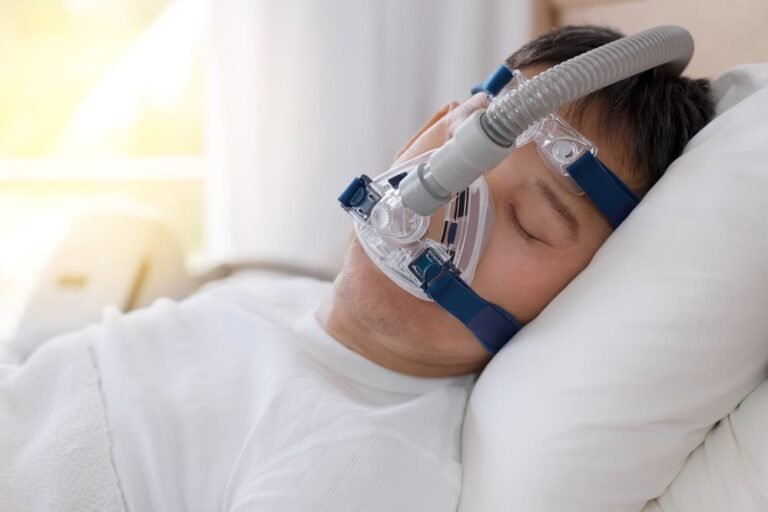Two pieces of medical equipment frequently employed to treat respiratory problems are oxygen concentrators and constant positive airway pressure (CPAP) machine. Oxygen concentrators supply oxygen enriched air to individuals who must raise the level of oxygen in their blood. During sleep, CPAP devices provide pressured air to help maintain the upper airway open. Both of these respiratory care machine calls for a doctor’s prescription. The diseases CPAP devices and oxygen concentrators tackle, their operation, and their distinctions will all be discussed in this article.
A CPAP Machine: What is It and How It Works
Mainly meant to treat obstructive sleep apnea (OSA), CPAP machines are designed to ease periodic pauses in breath or shallow respiration during sleep. A CPAP device maintains the user’s airway open and improves their night breathing by means of a steady air stream delivered via a mask.
A CPAP device can help those with OSA to sleep better and lower their chances of diseases including daytime weariness, heart disease, and diabetes. CPAP machines can also greatly improve general wellbeing and daily performance if kept cleaned using CPAP travel cleaner by guaranteeing that a individual breathes normally.
An Oxygen Concentrator: What is It and How it Works
An oxygen concentrator is a machine that supplies supplemental oxygen. Outside air is drawn in by the concentrator, which then consumes nitrogen from it to raise oxygen percentage. A nasal cannula, sometimes known as a nose tube, transports this filtered air via either a face mask or a nose tube to the user.
One can find oxygen concentrators in portable or home versions. Portable models are more practical but more expensive; home appliances are usually large and fitted with wheels for easier transport. Usually, portable equipment also produces lower quantities of pure oxygen.
Conditions They Cure:
People suffering from lung disorders such as chronic obstructive pulmonary disease (COPD), pneumonia, asthma, pulmonary fibrosis, among others have low blood oxygen levels, so oxygen concentrators are needed. These devices offer more oxygen to help people breathe more normally and maintain their blood oxygen level up. For sufferers of long-term respiratory issues who struggle to get enough of oxygen from normal air, doctors usually advise such medicines.
In contrast, CPAP devices are mostly meant for obstructive sleep apnea (OSA). Breathing ceases when the airway is blocked totally or partially in sleep. Continuous pressure from CPAP therapy will help to keep the airway open, therefore preventing breathing pauses. Although it is not intended to offer extra oxygen, sometimes it is used for other sleep related breathing disorders but not specifically.
Key Distinctions:
The main difference between these two devices is their objective. While oxygen concentrators are supposed to raise oxygen intake for people with respiratory diseases, CPAP devices maintain the airway open for sleep apnea sufferers. Furthermore, unlike CPAP machines, which are mostly used during sleep, oxygen concentrators can be used around-the-clock as required.
A further major distinction is their air delivery method. CPAP systems provide pressurized air without modulating oxygen levels; oxygen concentrators give oxygen rich air without raising air pressure. If a patient has both low oxygen concentration and sleep apnea, sometimes a doctor can suggest using both equipment simultaneously.
Final Thoughts:
Respiratory care requires oxygen concentrators and CPAP systems to treat different conditions. CPAP machines help to keep airway obstruction away and treat sleep apnea; oxygen concentrators let patients with lung disorders maintain acceptable oxygen levels. Knowing these differences ensures patients receive the correct treatment for their specific condition, therefore improving overall quality of living as well as respiration.
